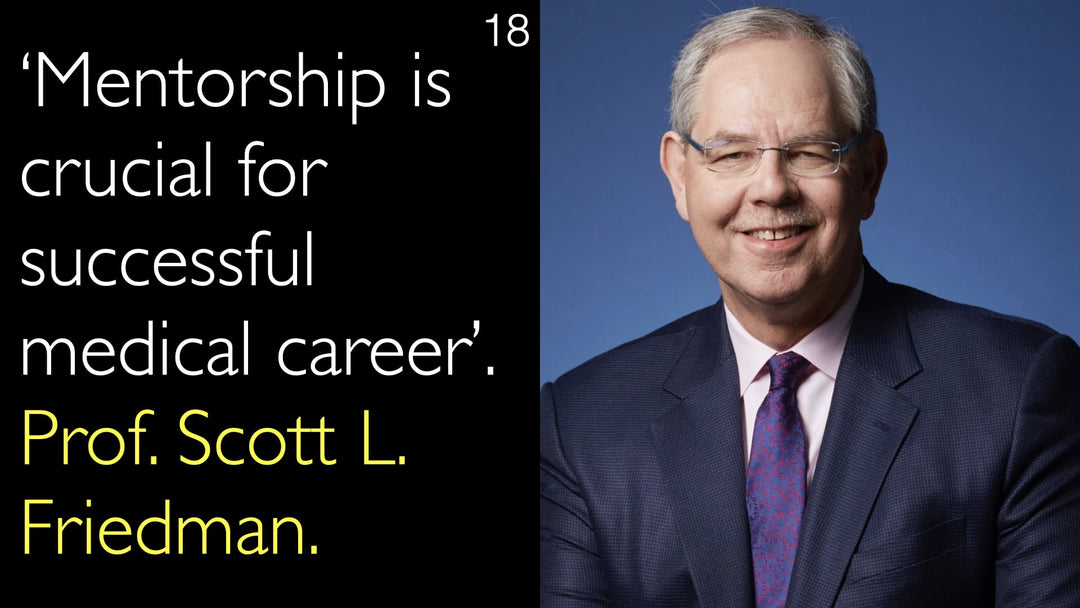Dr. Philip Theodosopoulos, en førende ekspert inden for cerebrovaskulær og kraniebundskirurgi, fremhæver den afgørende betydning af kontinuerligt anatomisk studie for at opnå kirurgisk mesterskab. Han beskriver sine omhyggelige undersøgelsesmetoder, som inkluderer brug af CT-scanninger og kadaverdissektioner, for at mestre den komplekse anatomi i kraniebunden. Ifølge Dr. Theodosopoulos kan selv rutinerede kirurger støde på udfordringer med normal anatomi. Han argumenterer for, at en tilbagevenden til grundlæggende anatomiske principper er nødvendig for at udvide grænserne for kirurgisk kunnen og sikre patientsikkerheden.
Mestring af kirurgisk anatomi for overlegen kraniebundskirurgi
Spring til afsnit
- Anatomien: Grundlaget for kirurgisk ekspertise
- Forskningsmetoder i anatomiske studier
- Hvorfor normal anatomi udgør en kirurgisk udfordring
- Kadaverdissektion til færdighedsudvikling
- Endoskopiske tilgange og anatomiske perspektiver
- Nødvendigheden af kontinuerlig læring for kirurgisk mesterskab
- Fuld transskription
Anatomien: Grundlaget for kirurgisk ekspertise
Ifølge dr. Philip Theodosopoulos, MD, er en dyb forståelse af mikrokirurgisk anatomi den fundamentale byggesten for enhver neurokirurg, der stræber efter verdensklasseekspertise. Han sporer moderne kirurgis oprindelse tilbage til renæssancepionerer som Andreas Vesalius, som understregede den afgørende betydning af human dissektion. Dette historiske perspektiv styrker hans overbevisning om, at kirurger først og fremmest skal være forankrede i anatomisk viden. Dr. Theodosopoulos mener, at tekniske færdigheder alene er utilstrækkelige uden denne grundlæggende forståelse.
Forskningsmetoder i anatomiske studier
Dr. Philip Theodosopoulos, MD, anvender en alsidig forskningstilgang til at afdække kraniebundens kompleksitet. Hans omfattende arbejde inkluderer omhyggelige studier af tørre menneskekranier ved hjælp af avanceret 64-skær computertomografi (CT-scanning). Et studie analyserede for eksempel 84 tørre kranier, mens et andet gennemførte en morfometrisk analyse af 100 kranier ved brug af CT-scanninger og Brain Lab-navigationssystemer.
Han supplerer denne radiologiske analyse med praktiske endoskopiske og mikrokirurgiske dissektioner. Hans forskning benytter formalinfikserede kadaverhoveder og -prøver til at træne og forfine kirurgiske tilgange, såsom gennem mellem- og nedre næsepusle samt gennem kæbehulen via Caldwell-Luc-tilgangen.
Hvorfor normal anatomi udgør en kirurgisk udfordring
Et centralt element i dr. Theodosopoulos' filosofi er, at normal anatomi i sig selv er en primær udfordring i kirurgi. Han advarer klart: "Normal anatomi kan forvandle en fremragende kirurg til en middelmådig kirurg." Under operationer støder kirurger hyppigst på normale anatomiske strukturer, ikke patologiske. Uden en udtømmende og intim forståelse af hver nuance og almindelig variation kan en kirurgs præstation blive alvorligt kompromitteret.
Derfor er det ikke tilstrækkeligt kun at operere på patienter for at udvikle færdigheder. Dr. Philip Theodosopoulos, MD, forklarer overfor dr. Anton Titov, MD, at en kirurg må gå uden for operationsstuen for kontinuerligt at studere og genlære anatomiske relationer for at undgå suboptimal praksis.
Kadaverdissektion til færdighedsudvikling
Dr. Philip Theodosopoulos, MD, fremhæver kadaverdissektion som et uundværligt værktøj til at finpudse kirurgiske færdigheder og innovere sikkert. Han mener, at det er et etisk imperativ at øve nye teknikker i et simuleret miljø eller på kadavermateriale, før de prøves på patienter. At anvende uafprøvede teknikker direkte på en patient svarer til "menneskeeksperimentering", hvor kirurgen endnu ikke er kompetent.
Denne metode giver kirurger omfattende erfaring uden risiko for patienter. Det er den eneste måde sikkert at "skubbe grænserne" for, hvad der er kirurgisk muligt, forstå de præcise begrænsninger ved forskellige tilgange og fuldt ud forstå risici ved en procedure.
Endoskopiske tilgange og anatomiske perspektiver
Et væsentligt fokus i dr. Theodosopoulos' seneste arbejde er mester
Man skal forstå forholdet mellem anatomiske strukturer. Det seneste arbejde, vi har udført, fokuserer på endoskopiske metoder til behandling af kraniebunden.
Kraniebunden, som vi har set tusindvis af gange forfra. Kraniebunden, som vi ser fra det subkranielle område. Den ser så anderledes ud, når man kommer nedefra. Det er den samme anatomi.
Anatomien ændrer sig ikke, uanset om metoden er nedefra, forfra eller fra siden. Man skal studere og forstå begrænsningerne, relationerne osv. i forhold til den specifikke behandling, man udfører.
Først derefter vil man ikke blive dygtig. Man vil ikke forstå grænserne. Man vil ikke forstå de risici, man tager. Så vil man være suboptimal i sine kirurgiske færdigheder.
I træningen er det afgørende for os alle. Det er ikke kun afgørende i træningen af vores kirurgiske residerende eller fellows.
Dr. Anton Titov, MD: Men i træningen af os selv, i træningen af os alle, er det bydende nødvendigt, at vi gør det. Vi skal studere kirurgisk anatomi kontinuerligt og grundigt.
Hvad motiverer førende kirurger? Hvordan opnår man førende kirurgiske færdigheder? En videointerview med en førende ekspert inden for kraniebundskirurgi. Kirurgisk ekspertise og anatomi.








